It's that time again in Southern California. Fire season is in full force, with high temperatures and bone-dry fuel in our wildlands. As we watch firestorms rage across other parts of the country, we have our fingers crossed here in Santa Barbara, hoping to keep the wildfires out of our backyard. But, in case our fingers don't have the fire-preventing magic we wish for, it's time to take a critical look at how we can protect our resources.
Here in fire country, designing with fire in mind is a top priority. A well-thought-out landscape design can significantly reduce or even prevent property damage by wildfire. Refer to your state, county and/or local fire safety guidelines, and then look for creative design solutions that meet the recommended measures for defensible space. In Santa Barbara, for instance, we follow Cal Fire's 100 Feet Defensible Space guidelines to develop an overall strategy and select plant material from the Santa Barbara Fire Department's High Fire Hazard Area Desirable Plant List.
Your city, county and state likely have similar guidelines and plant lists. With a little legwork and some thought, you should be able to create a firesafe, water-efficient, functional and — let's not forget — beautiful landscape. Don't put it off any longer; it's time to start designing for disaster.
General guidelines from California fire safety resources — plus a few design alternatives for creating gorgeous defensible space in your landscape — are discussed below. Remember, they are just guidelines. Nothing can provide absolute protection from damage or loss by wildfire.
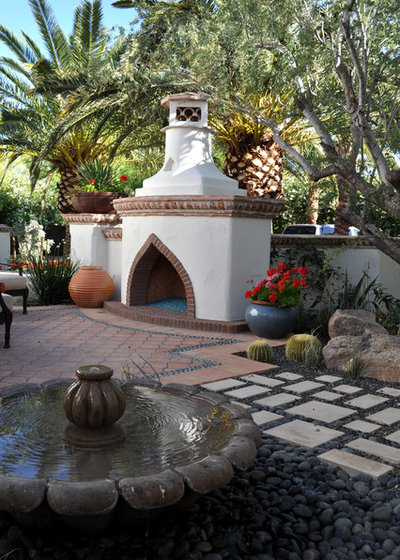
Exteriors By Chad Robert
1. Within 30 Feet of Your House: Create a Firebreak — the "Lean, Clean and Green" ZoneClear a 30-foot area around your home, reducing flammable vegetation. To avoid the "scorched earth" look, work with inflammable floorings (such as tile and stone), mulch (such as gravel) and plants with low fuel/high moisture content (such as lawn and succulents).
This home's courtyard provides a firebreak that uses noncombustible hardscape and less-flammable plants.
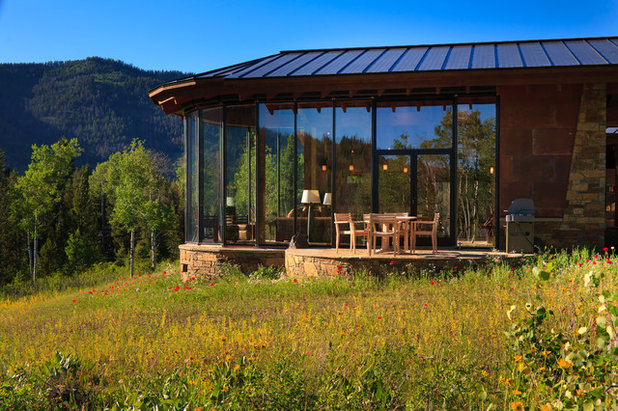
Teton Heritage Builders
"Lean" plant materials contain little fuel. Meadows around the home also function as a firebreak and give a beautiful natural aesthetic.
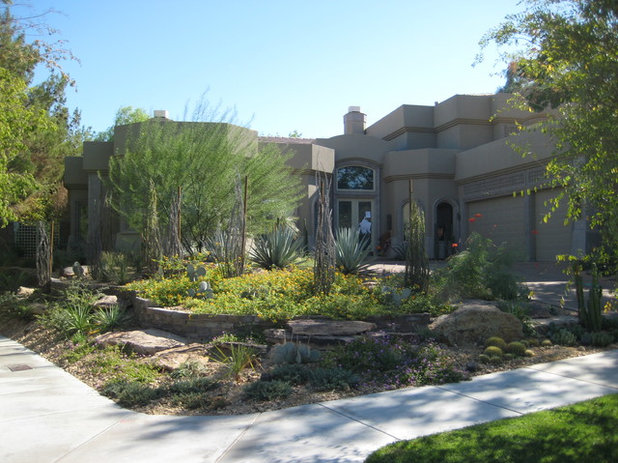
Sage Design Studios, Inc.
Succulents and cacti make for a striking fire-resistant plant palette. Succulents and cacti, such as aloe, aeonium, echeveria and cereus, store a great deal of water in their tissues, making them wonderful alternatives to high-fuel plants.
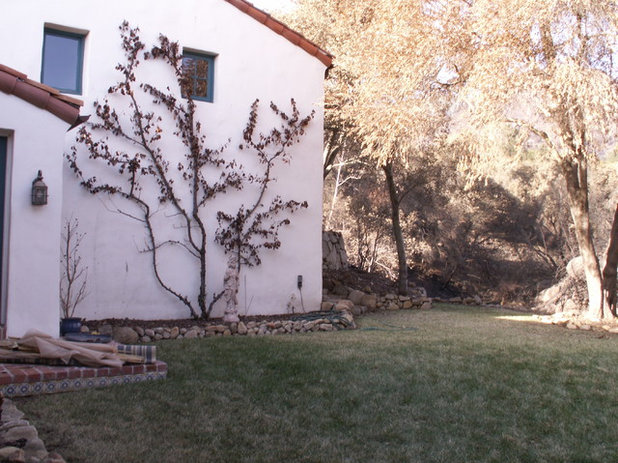
Margie Grace - Grace Design Associates
Saved by the firebreak. Many factors played a role in this structure's survival of the 2008 Tea Fire in Santa Barbara, including the patch of irrigated lawn that provided an effective firebreak. Because this area had little fuel and high moisture content, embers were unable to find anything to burn.
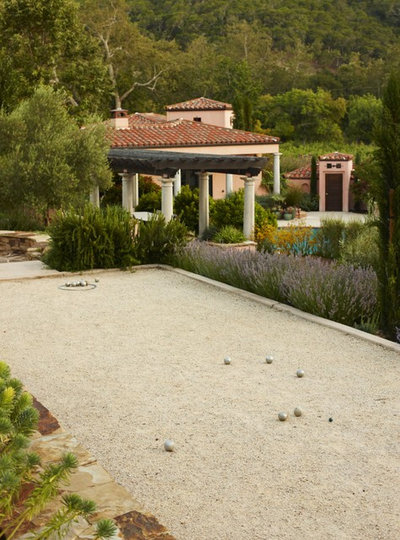
Jeffrey Gordon Smith Landscape Architecture
Dual-purpose firebreak. Bocce, anyone?
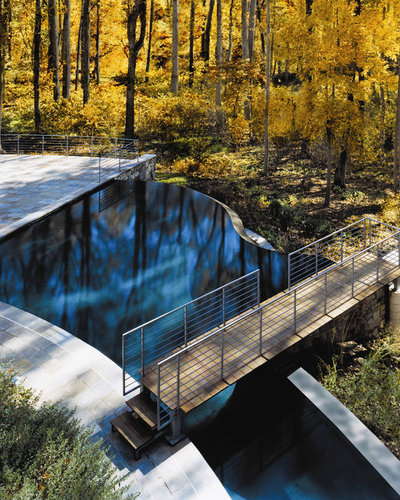
Lewis Aquatech
Water: the ultimate inflammable material. Pools and spas provide homeowners with stored water that can come in handy for fire suppression by firefighters.
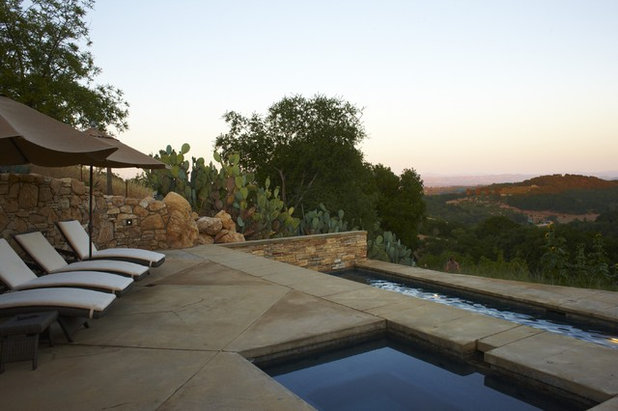 Eliminate flammable materials near the house.
Eliminate flammable materials near the house. As much as I love the rustic feel of a wooden deck, if you're in a high fire hazard zone, it's best to replace it with noncombustible materials such as stone, concrete or tile — unless it was built to withstand an hour of direct flame before catching fire (current code in most high fire areas).
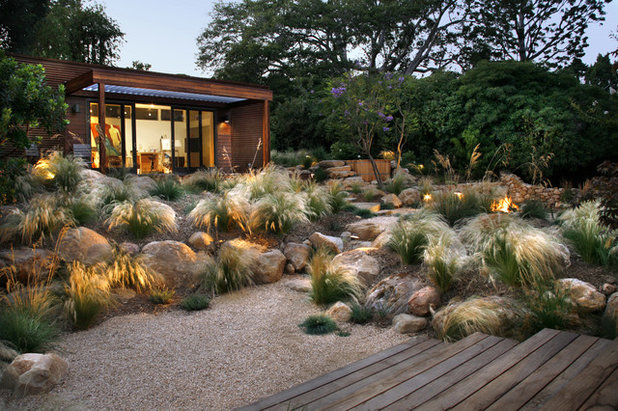
Margie Grace - Grace Design Associates
Fire-resistant wood. If you have your heart set on wood decking near the house, look for factory-applied treatments or lumber that has a high fire rating. Ipe, the wood used in this garden, is naturally fire resistant and has an "A1" fire rating. It also naturally resists rot, decay, insects and mold, and is a sustainable material.
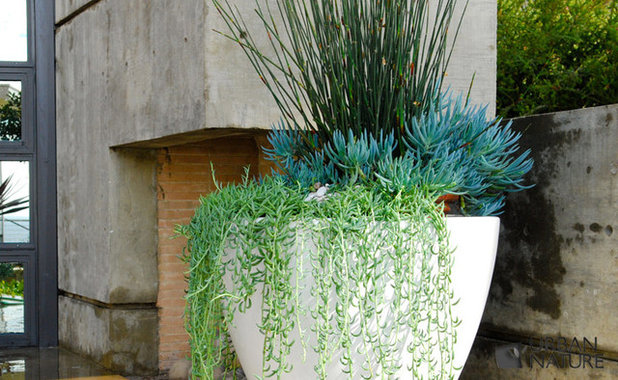
Urban Nature / Troy Silva Design Group
Use pots filled with succulents and statuary close to the house and structures to add interest without adding fuel for fire.
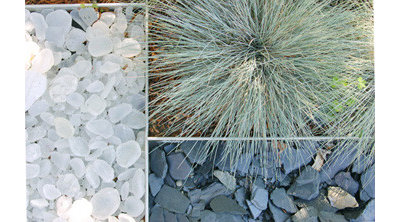 Use partially decomposed and damp mulch
Use partially decomposed and damp mulch close to the home.
Coarse, dry wood mulch simply adds fire fuel. If you're looking for more pizzazz in your fireproof mulching, try pea gravel, decorative rock or tumbled glass.
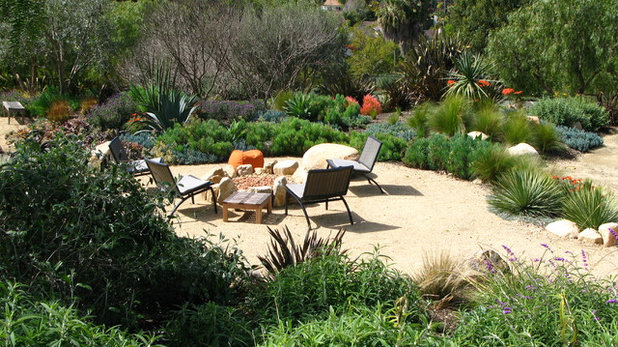
debora carl landscape design
2. 30-70 Feet (or to Property Line) Around Structures:
The Fuel Reduction ZoneHow you handle this depends on slope and vegetation. You're aiming to both reduce the fuel and increase space between plants to improve the chance of stopping or slowing a fire. Limit the connections between plants by breaking up large planting areas with native stone, gravel, mulch, decomposed granite, etc. This makes it harder for the fire to jump.
It's also important to
remove leaf litter. This not only tidies your landscape, it helps prevent the spread of fire as well. Try not to have more than three inches of fallen leaves or forest litter.
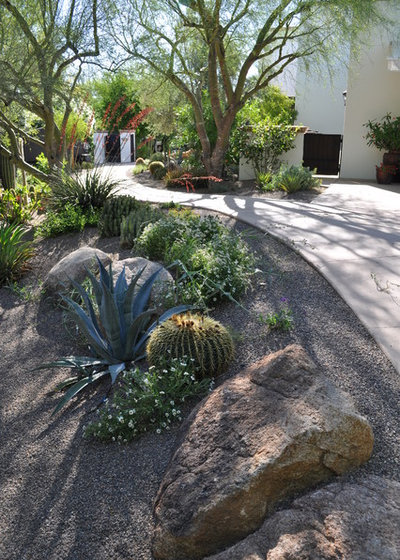
Exteriors By Chad Robert
Reduce fuel ladders. Remove overhanging branches that touch or sweep near the roof or ground. If not trimmed properly, they will act as a fire bridge, sending flames from ground to tree to roof. Your goal is to
reduce the connections between fuel sources.
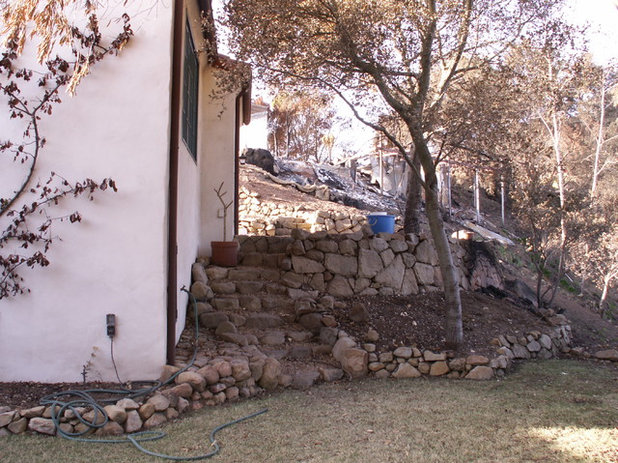
Margie Grace - Grace Design Associates
Steeper slopes require greater fuel reduction. The structure in the foreground was one of only four surviving homes out of 12 in this pocket in the Santa Barbara foothills. The slightly shallower slope, the lawn acting as a firebreak and the homeowners' fuel-management practices likely saved the house.
In the background, the charred steel framing members of the deck are all that remain of the neighboring home, which sat above a steeper slope cloaked in dense vegetation.
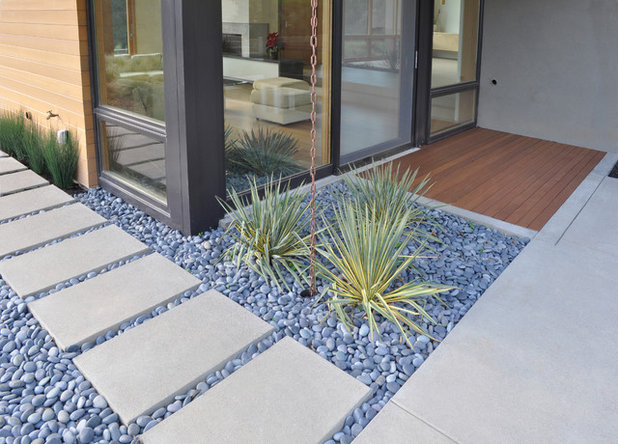
Huettl Landscape Architecture
3. MaintenanceOnce you've designed and built your firesafe landscape, maintenance is key to keeping it that way. Make sure you:
- Remove logs and stumps embedded in the soil within 100 feet of structures.
- Remove leaf clutter from roofs and gutters.
- Remove tall, dry grasses.
- Prune bushes and shrubs regularly to remove excess growth and dead leaves.
- Get rid of all the cuttings and debris ASAP.





